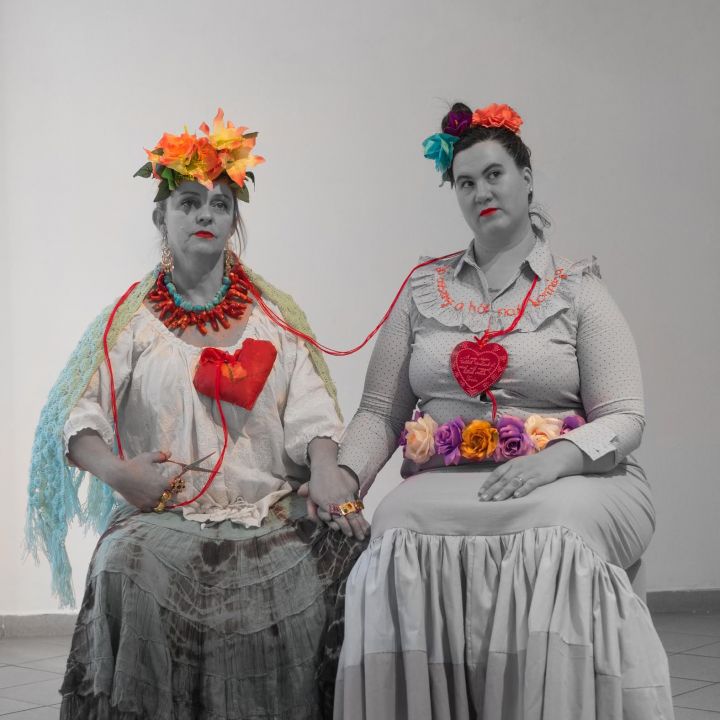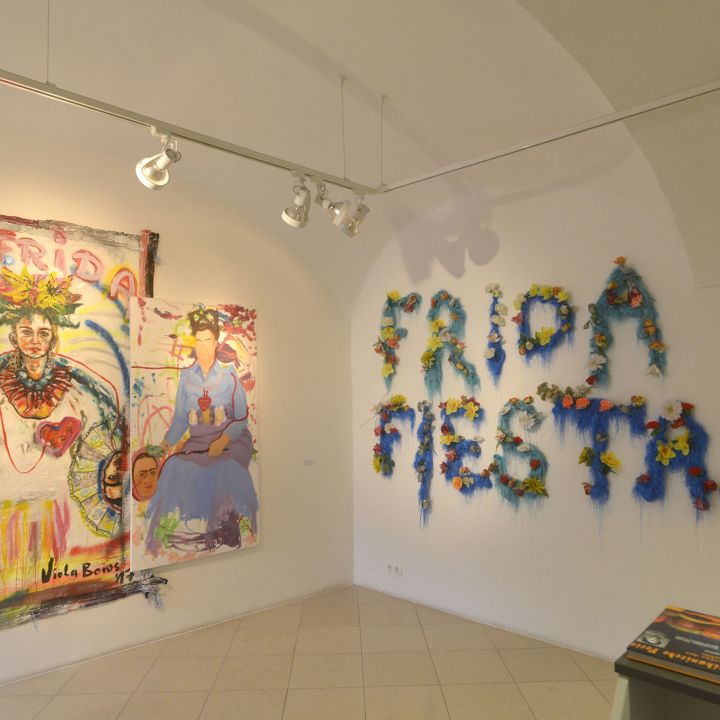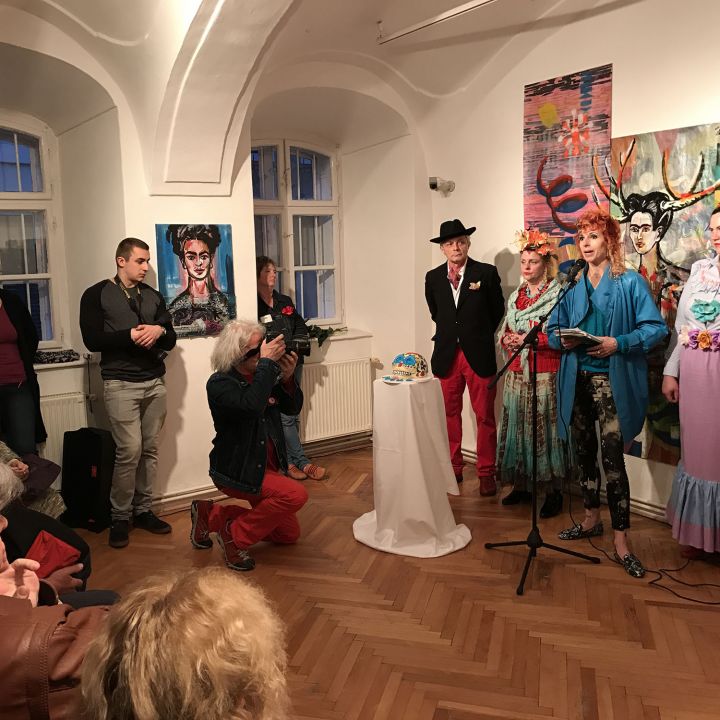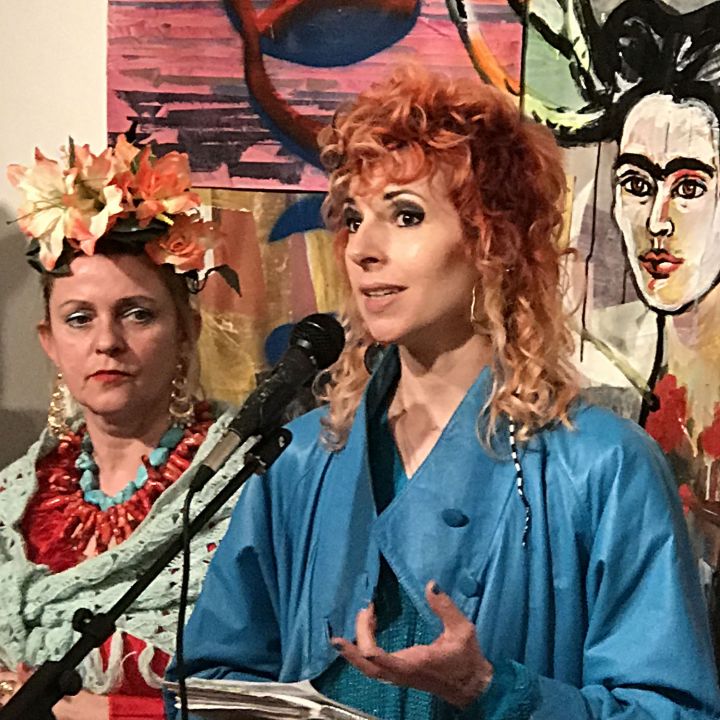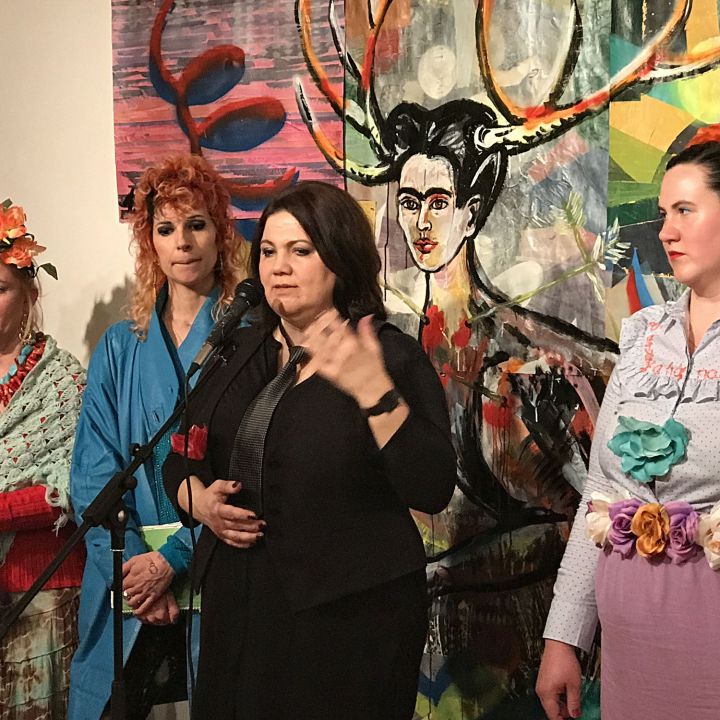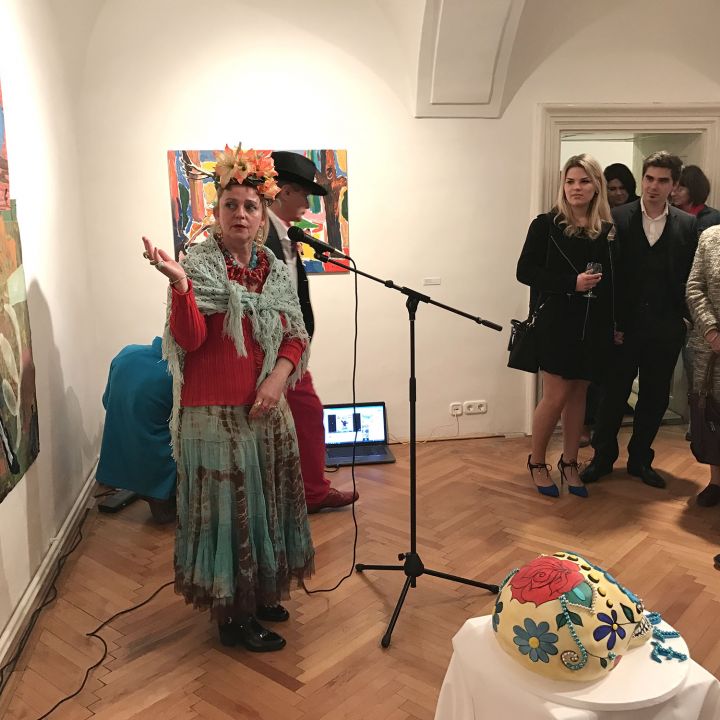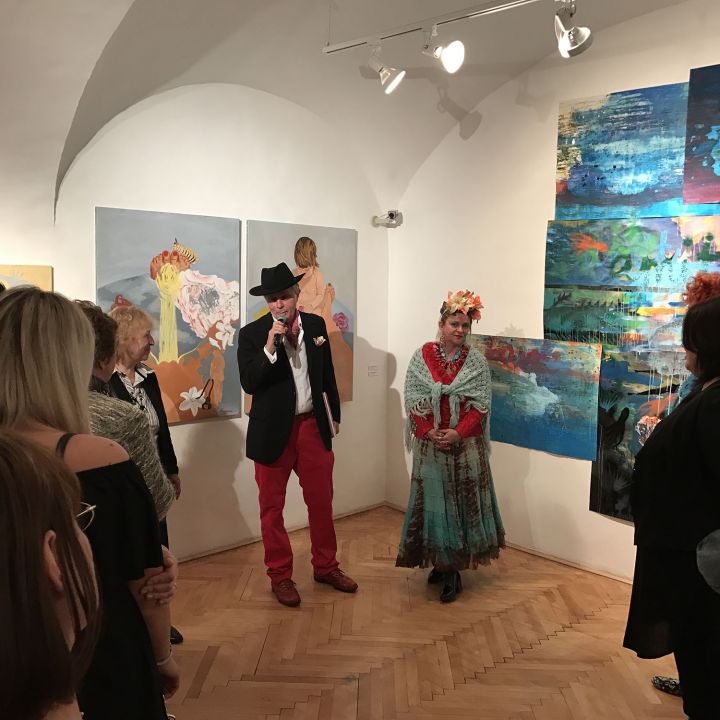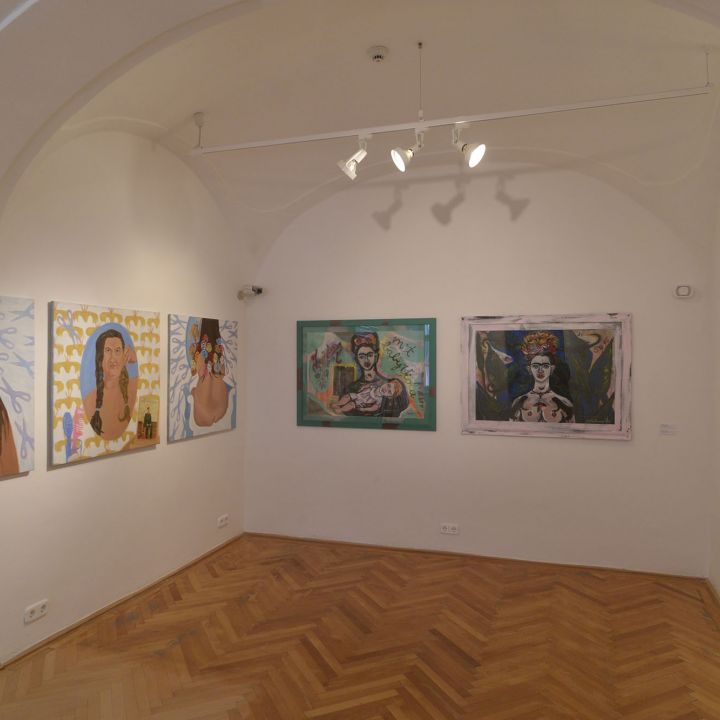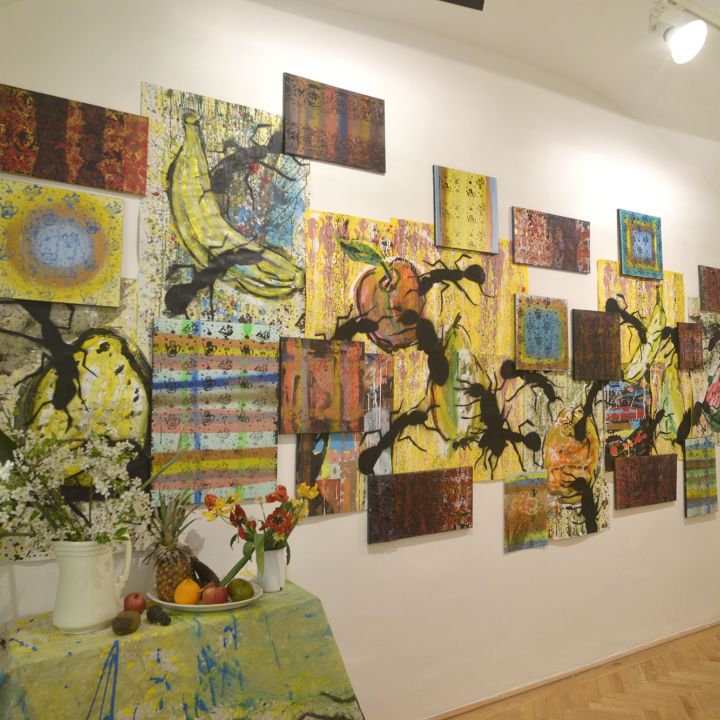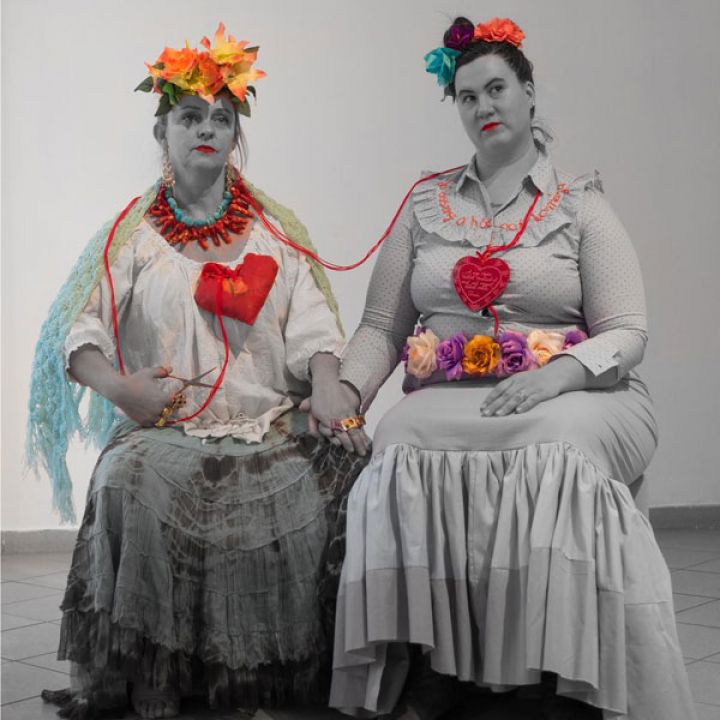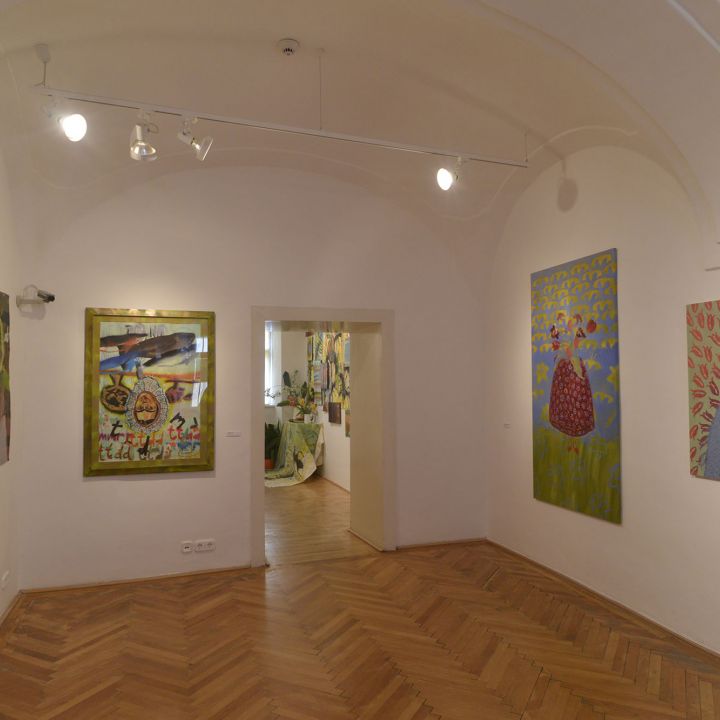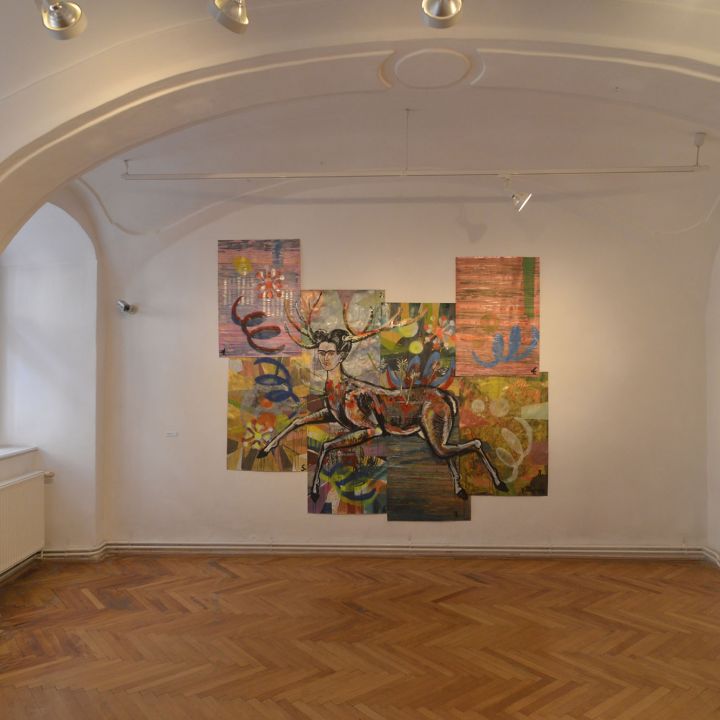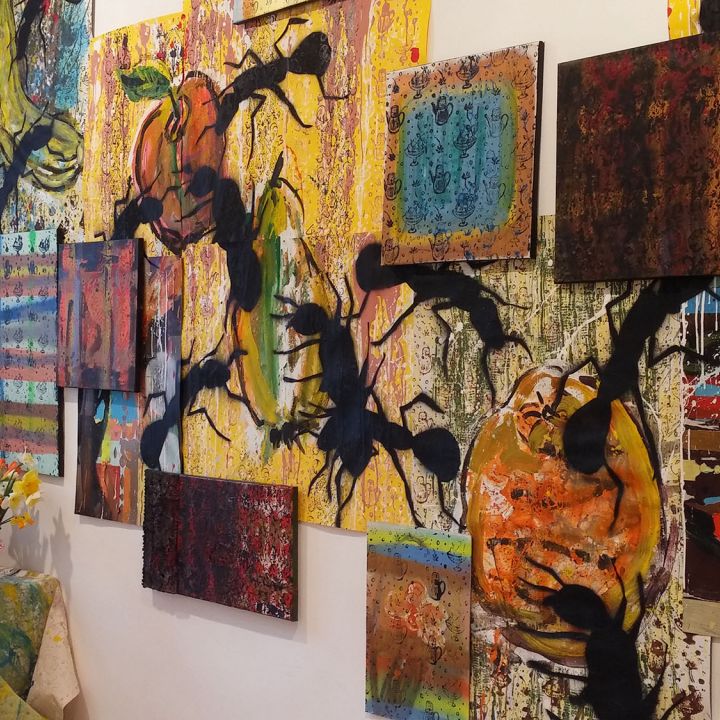Frida Kahlo would have been 110 years old this year, having been born in Mexico on 6 July 1907, although she later gave her birth date as 1910 in honour of the Mexican Revolution. Frida Kahlo really began painting while lying in bed, recovering from a bus accident in 1925. She never imagined that her personal style and her unique world of painting would not only be of interest to others, but would have a great influence on the ages to come.
The anniversary will be celebrated with an exhibition of two contemporary artists whose work has been influenced by Frida Kahlo's characterful paintings of physical flaws and pain, which also explore taboo subjects related to the female body. In our culture we tend to hide our pain, so Frida Kahlo's confessional diaries have become a revelation.
Andrea Dudás Fajgerné decided to become a painter at the age of 16, when she was introduced to the art of Frida Kahlo. She was fascinated by her self-portraits and her photographs of herself with her thick, knit eyebrows and moustache. This was very important to her at the time, it gave her freedom, as she herself did not conform to the fashions dictated by society. For example, she had a bushy eyebrow, which she did not pluck; it disturbed her environment, but not her, and she even wore it proudly in connecton of Frida. When Frida Kahlo became even better known with the 2002 film Frida, she broke with the subject for a while. Later, as an undergraduate she returned to it whens he began a conscious research on women painters from the 1500s to the 1950s with Orsolya Drozdik. Naturally, Frida resurfaced, although her paintings had long since become embedded in her subconscious, often resurfacing and inspiring her.
Boros Viola was inspired by Frida Kahlo's open acknowledgement of her physical and psychological pain, which our culture tends to hide. What attracts her is that she is a strong character, ruthlessly honest, dares to be sick and ugly, and besides all this, yet sexuality shines out of her.
Both artists are fascinated by Frida's ambivalent relationship with her husband. The surrealist imagery is particularly striking, although she did not consider herself a surrealist, André Breton was enthusiastic about her work. She said that she only painted her own life, unlike the surrealists who painted their dreams. For Viola Boros, the exotic Mexican flora and fauna, the folkloric, naïve character of the paintings and the pure, strong use of colour also contributed to the fact that many of her paintings not only refer to the Mexican painter in their visual and spiritual aspects, but also regularly appear in her paintings. In this, the relationship between the two exhibiting artists differs from that of Frida Kahlo.
The capturing of her pain, the acceptance of physical flaws is a defining characteristic of both of them and it is no coincidence that they both consider her painting Wounded Deer to be one of Frida's most beautiful paintings - when she depicts herself with a deer body full of arrows - she could not have created a more beautiful, metaphorical painting, which has everything. The exhibition features older Frida-inspired works alongside brand new works by the two artists.
The first version of the exhibition was shown in Szombathely, where it was a great success. Due to the different spaces, the points of connection and emphasis between the works change in the exhibition at Csikász Gallery.
Curator: Andrea Bordács

